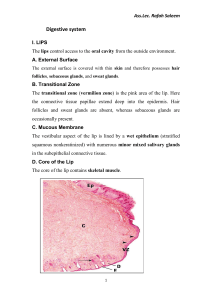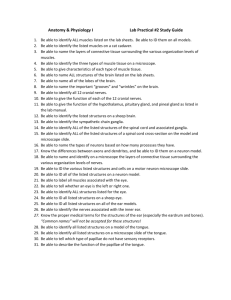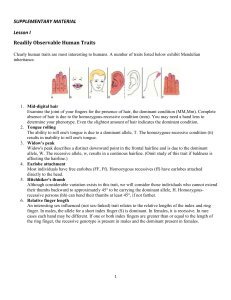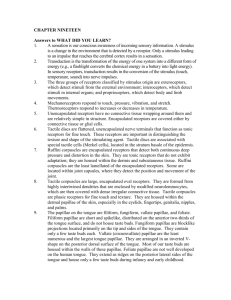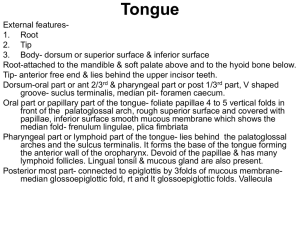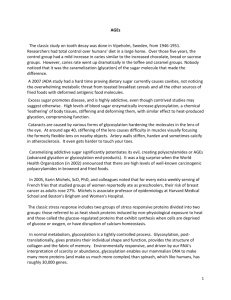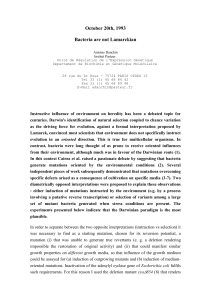(anatomical and histological study of the tongue
advertisement
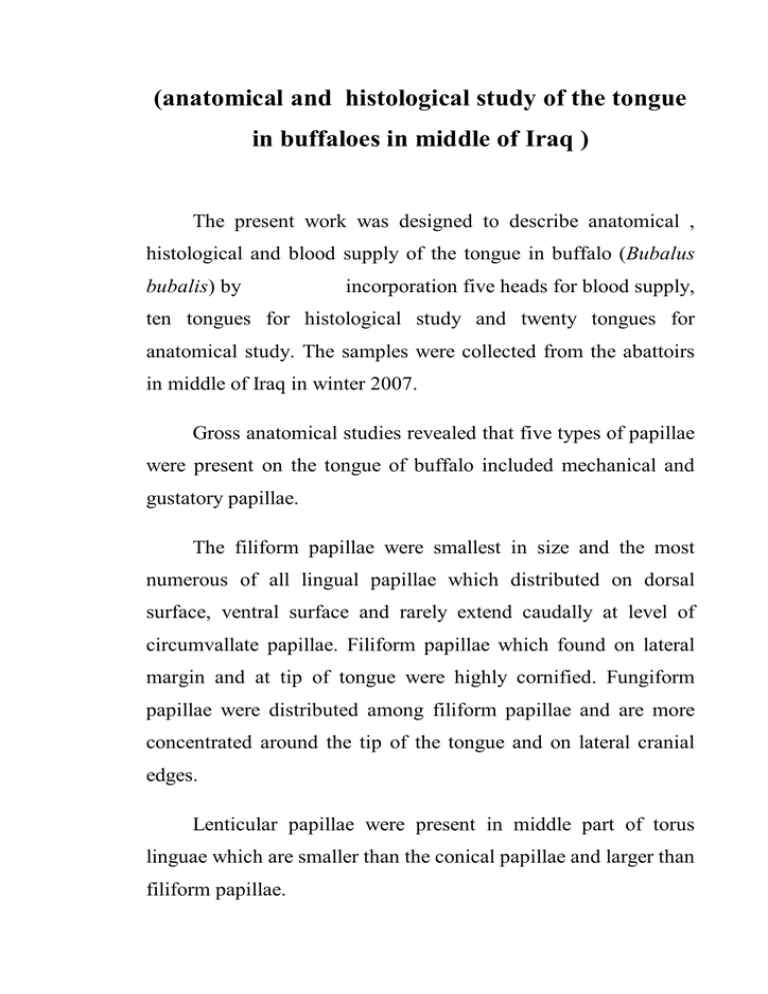
(anatomical and histological study of the tongue in buffaloes in middle of Iraq ) The present work was designed to describe anatomical , histological and blood supply of the tongue in buffalo (Bubalus bubalis) by incorporation five heads for blood supply, ten tongues for histological study and twenty tongues for anatomical study. The samples were collected from the abattoirs in middle of Iraq in winter 2007. Gross anatomical studies revealed that five types of papillae were present on the tongue of buffalo included mechanical and gustatory papillae. The filiform papillae were smallest in size and the most numerous of all lingual papillae which distributed on dorsal surface, ventral surface and rarely extend caudally at level of circumvallate papillae. Filiform papillae which found on lateral margin and at tip of tongue were highly cornified. Fungiform papillae were distributed among filiform papillae and are more concentrated around the tip of the tongue and on lateral cranial edges. Lenticular papillae were present in middle part of torus linguae which are smaller than the conical papillae and larger than filiform papillae. The circumvallate papillae were located on dorso-lateral surface of torus linguae where their number on the left side varied from (12-16) while on the right side varied from (14-19) and these papillae arranged in a V-shaped pattern. The conical papillae were the largest and located at the periphery of torus linguae on both sides. These papillae were a leaf –like shape and more clearly toward the root of the tongue and then disappear gradually. The study of blood supply of tongue in buffalo has been done by five heads of adult buffalo where the result revealed that the common carotid artery terminated by dividing into external carotid artery and occipital artery, the external carotid artery give linguofacial which branch into lingual and facial artery then salient species differences are recorded and discussed. The histological studies conducted on the surface epithelium and lamina properia-submucosa revealed differences in these layer in different region of tongue surfaces. Where mucous membrane of tongue in buffalo revealed difference in thickness of epithelial layer in different region of tongue surfaces where the epithelium which cover torus linguae is thicker than on root and dorsal surface of apex. The lamina properia - submucosa can not clearly demarcated. The dense irregular connective tissue of the lamina properia-submucosa is loose in the region of root of the tongue. The collagen fiber density was more in dorsal surface than ventral surface of lamina properia –submucosa. Same is observed for elastic fibers particularly in tip region. In general, the number of elastic fibers decreased towards the root of the tongue. On the basis of histological features two types of filiform papillae, the epithelium of the first type tapered into curved spine –like process and connective tissue core is scarce while the second type blunt curved variety and connective tissue core penetrated the general epithelial surface ,while the conical papillae divided into three types : small conical papillae , giant conical papillae and middle size conical papillae. Fungiform papillae are mushroom-shape and its surface epithelium was covered by a moderately cornified layer and indented by several secondary papillae. Only the lateral papillae have taste buds on their dorsal surface and connective tissue core was a richly vascularized. The circumvallate papillae are similar to that in other animals. Where they were large flattened circumscribed –shape papillae surrounding by deep trenches and covered by a moderately cornified layer containing taste buds on lateral wall and connective tissue core revealed a dense irregular connective tissue with profuse blood vessels and different cells. The upper epithelium has several small secondary papillae Two types of lingual glands in this research were recognize the von – Ebners glands and Weber's glands.The von – Ebner's glands are associated with circumvallate papillae and located under it between lamina properia and tunica muscularis and These glands were serous in type. The Weber's glands are associated with root of tongue which located under it in lamina properia as well as between tunica muscularis and these glands were pure mucous in type. The present study showed the presence of lingual tonsils at posterior one – third of tongue which are aggregation of lymphoid tissue under the surface of root near the Weber's glands. These tonsils were penetrated by epithelial crypts.
